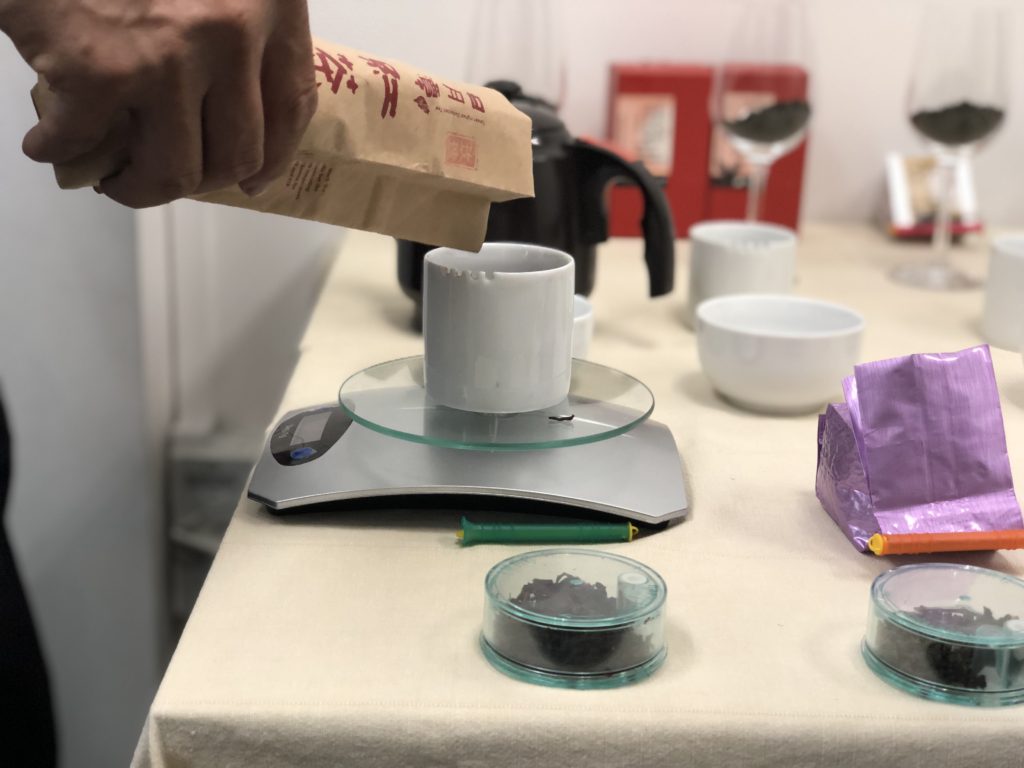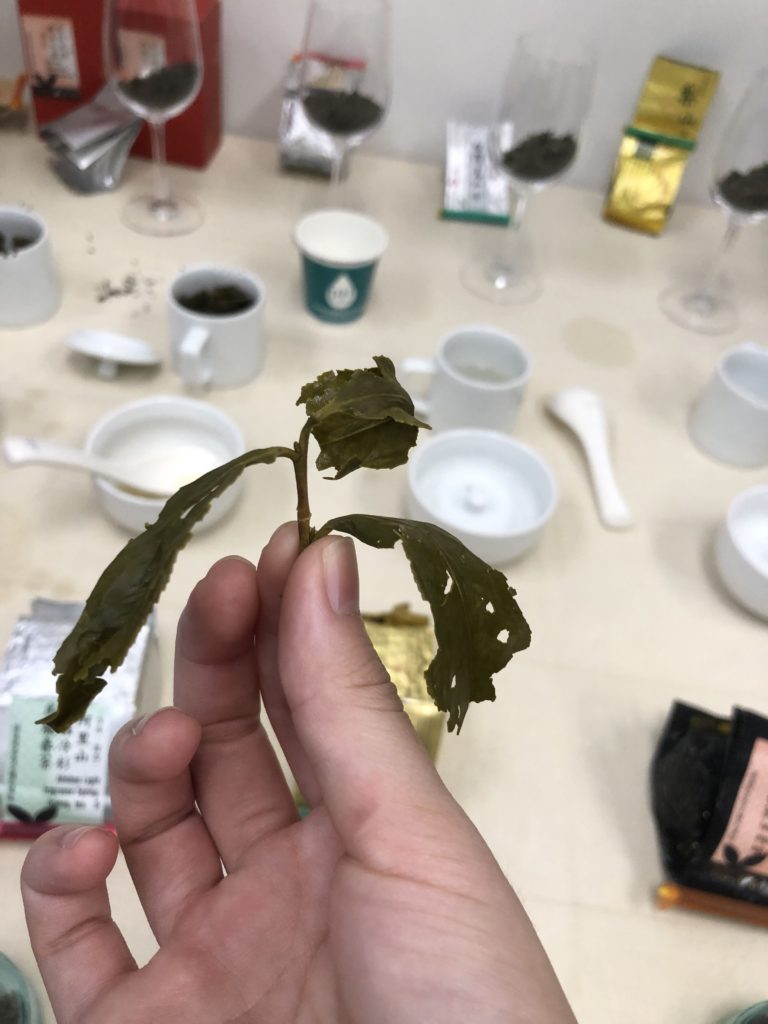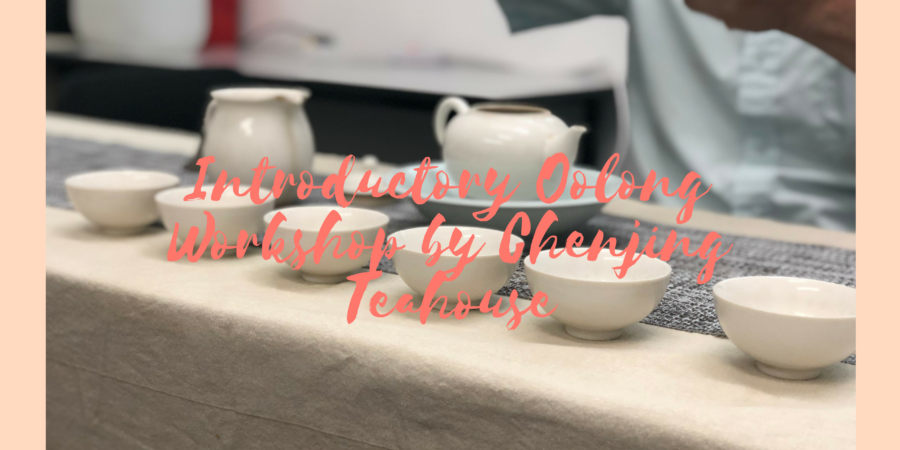One nice thing about writing about my love of tea on Dayre is that it helps me connect with other tea lovers in Singapore, such as Esther. She invited me and Cher to go the the introductory oolong class, organised by Chenjing Tea House yesterday and it was such fun! I’ve been for a few general tea classes (like the one by Tea Chapter and Parchmen), but this is the first time I went for a workshop that focuses on one type of tea.
The class was taught by two people: Gary, the owner of Chenjing Tea House, and Mr. Chua, a tea farmer and expert from Taiwan.
Oolong Basics and Tasting
Since this is an introductory class that was supposed to take about 3 hours (although we overran by almost 2 hours), there was more theory than tea tasting. The reasoning behind this is that if we taste the tea without knowing anything about it, then we won’t know what to look out for when tasting. Still, even though this was supposed to be a theory-heavy class, we managed to try a lot of tea – we tried 1 black tea (which was there to show us the different shapes tea leaves can take) and 7 different Taiwanese oolongs.
The workshop first introduced us to the basics of oolong, showing us how diverse oolongs can be depending on how much they’ve been oxidised and fired. The teacher also talked about the shape and taste of oolong and included some information about oolong cultivars; For example I learnt that Oriental Beauty is made from the 青心大冇 (Qing Xin Da Pa) cultivar.

After this introduction to oolongs, we got to taste a few. These were brewed in the 鉴定 (jian ding) method, which is for drawing out all the flavours of the tea. The steeping time for this is much longer, but to my surprise and delight, the teas were not bitter at all.
It’s pretty interesting seeing how tightly the leaves can be rolled into a ball – one of them unfurled into three leaves! Apparently, oolongs are either from the one bud and two leaves or one bud and three leaves (if it’s just buds, then the price is naturally a lot higher).

Did you know that you can use a spoon (the Chinese soup spoon type of spoon) to help you with evaluating oolongs? The front of the spoon (the concave part) is for smelling the fragrance of the tea, while the back of the spoon allows you to smell the base notes (茶底). So if you walk into a reputable Chinese tea shop with a spoon like this, they’ll be afraid:

How to Buy Oolong
After the tasting, we learnt about how to choose oolongs. There are basically four principals to keep in mind: 望,闻,问,确. The class goes into quite a bit of detail, but here are my takeaways:
- 望 (Look): If you have a good idea of the sizes of Taiwanese oolongs, then you’ll be able to spot if a tea is suspiciously large. This is especially so for high-mountain oolongs, which tend to grow slowly and have smaller leaves. And while the colour of oolong shouldn’t be 100% uniform, about 70% of the leaves should be a similar colour and the remaining 30% of the leaves shouldn’t be too far off.
- 闻 (Smell): The oolong fragrance shouldn’t be too heavy and too consistent. If the tea smells too flavourful or the smell is consistently strong, then there might have been flavourings added to it.
- 问 (Ask): Ask the tea shop: Where is this from? When is this picked? Who made it? Knowing the answers can help you decide if the price is fair (assuming you have some knowledge of tea). For example, if someone claims to have a 2019 Da Yu Lin when the tea farms have already been destroyed [1], then you might want to find out if this was from the bottom of the mountain or if they’re claiming that it’s a high mountain oolong (the latter… probably only exists in the 2015 harvests and before) Even if you don’t, a good tea shop should not be afraid to tell you where their tea is from.
- 确 (Ascertain): Use your five senses and what you know about the tea to determine the quality and if the answers from the tea shop are consistent with what you know about that particular type of tea. Look at the dried leaf, the brewed leaf, the fragrance, etc.
The last part of the workshop was on different types of high mountain tea. That was really eye-opening and deserves a post of its own, so I’m going to try and research this some more.
How to Store Oolong
This was pretty basic – store oolongs in a dry, shaded place. There isn’t a need to add a silica gel packet, but you would want something porcelain (as metal can rust) that does not let air in [2].
Oolongs, black teas, and dark teas should be stored in room temperature as they are all very dry, but green teas, white teas, and yellow teas should be stored in the fridge and drunk as soon as possible because they are fresher and have higher water content. If you store oolongs, black teas, and dark teas in the fridge, the condensation that occurs when you take the tea out might damage the tea.
On Brewing Tea
Mr. Chua was talking about brewing oolongs six times – the first two are to taste the sweetness (甜度) of the tea, the middle two are for the fragance and flavour, while the last two are for the base notes. Of course, you can brew the tea many more times if you think it can hold up, but as a general rule of thumb, you can safely brew good oolong six times.
When we tasted the tea, I was honestly very shocked at how sweet the tea was on the fifth and sixth brew. It’s not like the initial sweetness of the first two brews – this was a lot more settled – but it was delicious.
Overall thoughts
I really appreciated this class! Both Gary and Mr. Chua were very insistent on having us experience the teas and were very free with their knowledge. Part of the reason why the class overran by two hours was because they answered all our questions in detail! And despite the fact that all the teas we tried are available for sale, there were no hard-selling tactics involved – they seemed very sincere in helping workshop participants understand more about oolong and find the type of oolong that suits them. You can different between oolongs according to their cultivar, processing method (how oxidised and how roasted it is), the terroir, and season, and through trying the teas, I realised that I prefer the nuances of each cultivar over the roasted notes in oolong.
As you may have guessed from the Chinese words peppering the text above, the entire workshop was held in Chinese. That said, I managed to understand most of it (and got friends to help me translate whenever I didn’t). So if you’re in Singapore and you want to find out more about oolong classes, I would definitely recommend going for this introductory course. I’ve realised that there’s still so much more to learn and I would definitely be interested in going for further classes.
Contact Details for Chenjing Tea House
Carousell (You can see what they sell here)
I checked and Chenjing Tea House does popups all across Singapore. Their next popup will from the 12th to 18th April 2019 at Hougang Mall.
Notes
[1] I was told at the workshop that the government has taken back all the Da Yu Lin lands for planting, and this report by Munchies seems to support it. This blogpost doesn’t go as far but it says that as of 2015, only a few farms remain. Interestingly, there aren’t many Chinese news sources about this (I’ve only found one from 2015 saying that they’re going to destroy the farms) and I haven’t been able to find a definitive answer about whether there still are farms in Da Yu Lin. There may be a lot of people still selling the tea, but Taiwanese oolong is quite commonly faked (using oolong from Vietnam and other regions) or blended with oolongs from Vietnam, so the availability of the tea doesn’t say much either. So on one hand, you have a farmer and a limited number of sources saying that most, if not all, the tea farms from Da Yu Lin are gone. On the other hand, there are still a lot of places claiming to sell it. I’ll continue looking into this, and if there’s more information, I’ll update.
[2] Just a note, the porcelain should be glazed. If you’re using an unglazed clay jar (the way Yixing tea pots are unglazed), be careful not to store more than one type of tea in that jar because the flavours will be absorbed. In fact, you shouldn’t be storing two types of tea in the same container because they will influence each other.

What a fun class (I too like oolong a lot)! You did a really nice job summarizing your experience.
Thank you! I couldn’t sleep that night, but it was so worth it because of all the great oolong I got to try (;
I don’t think I could think of a better way to spend the day than drinking oolong for hours. It definitely sounds like Chenjing Tea House needs to be added to my tea travel wish list. 🙂
It was such a great session! They are definitely worth checking out if you happen to be in Singapore!